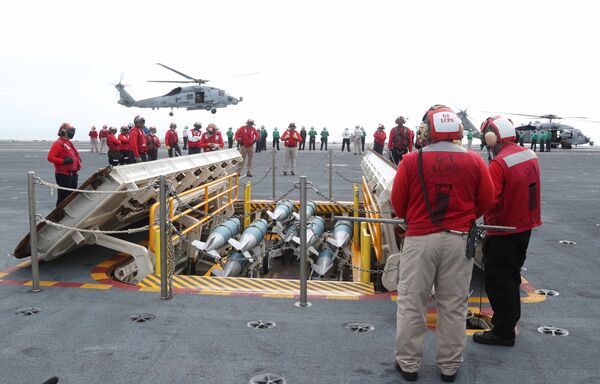At the annual symposium hosted by the Tailhook Association fraternal nonprofit group on September 12, Rear Adm. John Meier, the head of Naval Air Forces Atlantic, said the Ford won’t be ready for at least another year and a half.
The issue we are working closely on is building out of the gate reliability, making sure [the Electromagnetic Aircraft Launch System (EMALS)] and [Advanced Arresting Gear (AAG)] has the right sparing, parts and equipment in the event that something breaks,” Meier said, according to Defense News. "But it’s also making sure we have the right procedures and methodologies so those things don’t break.”
“We’re still not where we want to be, but we’ve made great strides and we’re getting better every year,” he added.
The first in a new class of aircraft carriers originally intended to replace the aging Nimitz-class carriers, the USS Ford boasts a bevy of new systems, including the EMALS, AAG, high-speed munitions elevators and a new propulsion system, among 19 other new tech items. However, each of these systems has had to overcome major design flaws that have delayed the Ford from its expected first tour of duty in 2018. The warship is also significantly over-budget, costing more than $13 billion at last estimate.
For example, when the warship was delivered to the Navy in 2018, not one of the 11 weapons elevators, which lift munitions up to the flight deck to be loaded onto waiting aircraft, was working. Then-Secretary of the Navy Richard V. Spencer promised they would be online by the summer of 2019, telling US President Donald Trump, “The elevators will be ready when she pulls out, or you can fire me.” More than a year later, Spencer is gone - thanks to a scandal involving a pardoned US Navy SEAL - but just six of the elevators are working.

The advanced EMALS, which launches aircraft off the front of the ship and into the skies, has been frustratingly unreliable as well. Even after years of fine-tuning the new system, it broke down during a “historic underway” this past June, leaving the carrier’s 80-odd aircraft stuck in the hangar. Previous carriers used a steam-powered system that was clunky, if reliable. Shipmaker Huntington Ingalls has promised that if the EMALS is working correctly, it is faster than a steam catapult, but that “if” remains as important as ever.
The continued delays led the Navy to fire the head of the Ford’s program office in July. In March, then-acting Navy Secretary Thomas Modly said the fourth ship in the Ford class, the USS Doris Miller recently bought by Congress, would likely be the last of its class. The second and third Ford-class carriers, the USS John F. Kennedy and USS Enterprise, are at various stages of construction.



